Scientific name Giraffidae Phylum Chordata Order Even-toed ungulate | Higher classification Giraffoidea Rank Family | |
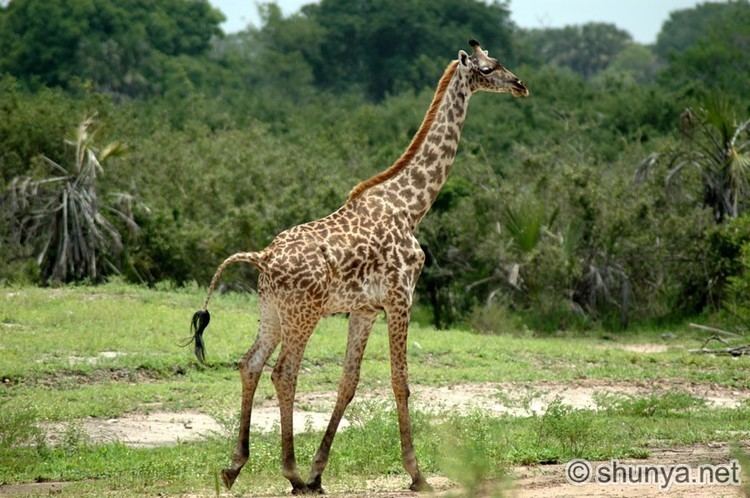 | ||
Lower classifications Giraffe, Sivatherium, Samotherium | ||
Giraffidae is a family of ruminant artiodactyl mammals that shares a common ancestor with deer and bovids. This family, once a diverse group spread throughout Eurasia and Africa, presently comprises only two extant genera, the giraffe (four species of Giraffa) and the okapi (the only known species of Okapia). Both are confined to Sub-Saharan Africa: the giraffe to the open savannas, and the okapi to the dense rainforest of the Congo. The two genera look very different on first sight, but share a number of common features, including a long, dark-coloured tongue, lobed canine teeth, and horns covered in skin, called ossicones.
Contents
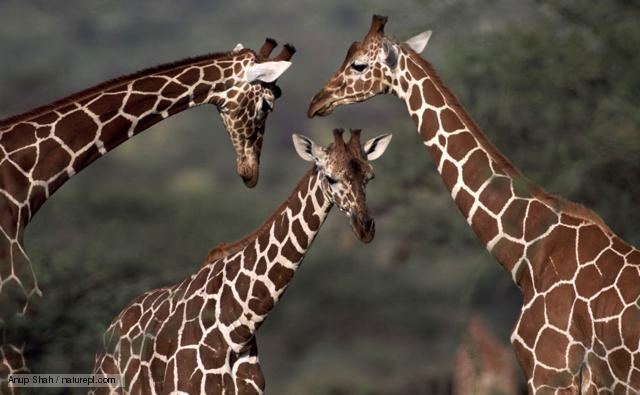
Evolutionary background
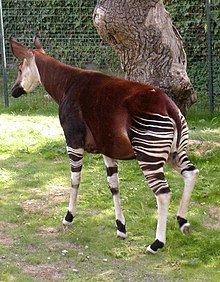
The giraffids evolved from a group of even-toed ungulates in the early Miocene almost 25 million years ago. They formed part of a relatively late mammal diversification that also produced cattle, antelopes, and deer following a climate change that transformed subtropical woodlands into open savannah grasslands. The giraffids diversified into many now extinct forms that inhabited large parts of Eurasia and eventually spread into Africa, where the only still extant forms persist. The most primitive forms had short necks and were about the size of a modern red deer, somewhat similar to the modern okapi.
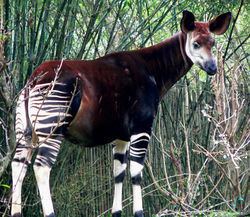
There are two main groups of extinct giraffids: one group with robust limb bones, the Sivatheriinae, represented by Sivatherium during the Plio-Pleistocene, and another with long, slender limb bones classified in different subfamilies; either Giraffinae and Palaeotraginae or just Giraffinae (with the two tribes, Giraffini and Palaeotragini). While Giraffa and Palaeotragus can be easily attributed to the latter group, the placement of Okapia and Mitilanotherium remains disputed.
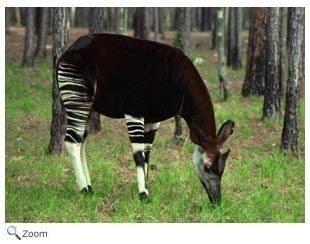
Their closest fossil relatives include the deer-like palaeomerycids and the climacocerids, many genera of the latter having once been identified as giraffes themselves.
Fossil records indicate that many other giraffids thrived between the Miocene era (around 20 million years ago) and the recent past. One major group of extinct giraffids, the sivatheres, had enormous, branching ossicones, and would have looked more like massive deer than giraffes.
Taxonomy
Molecular studies present Giraffidae as a sister group to Cervidae, Moschidae and Bovidae.
Characteristics
The giraffe stands 5–6 m (16–20 ft) tall, with males taller than females. The giraffe and the okapi have characteristic long necks and long legs. Horns are present on both males and females in the giraffe, whereas only males possess horns in the okapi.
Giraffids share many common features with other ruminants. They have cloven hooves and cannon bones, much like bovids, and a complex, four-chambered stomach. They have no upper incisors or upper canines, replacing them with a tough, horny pad. There is an especially long diastema between the front and cheek teeth. The latter are selenodont, adapted for grinding up tough plant matter. Like most other ruminants, the dental formula for giraffids is 0.0.3.33.1.3.3. Giraffids have prehensile tongues (specially adapted for grasping).
The extant giraffids, the forest-dwelling okapi and the savannah-living giraffes, have several features in common, including a pair of skin-covered horns, called ossicones, up to 15 cm (5.9 in) long (absent in female okapis); a long, black, prehensile tongue; lobed canine teeth; patterned coats acting as camouflage; and a back sloping towards the rear. The okapi's neck is long compared to most ruminants, but not nearly so long as the giraffe's. Male giraffes are the tallest of all mammals, their horns reach 5.5 m (18 ft) above the ground and their shoulder 3.3 m (11 ft), whereas the okapi has a shoulder height of 1.7 m (5 ft 7 in).
Distribution
The two extant genera are now confined to Sub-Saharan Africa. The okapi is restricted to a small range in the northern rainforest of the Democratic Republic of Congo. Although the range of the giraffe is considerably larger, it once covered an area twice the present size — all parts of Africa that could offer an arid and dry landscape furnished with trees.
Behavior
The social structure and behavior is markedly different in okapis and giraffes, but although little is known of the okapi's behavior in the wild, a few things are known to be present in both species:
Classification
FAMILY GIRAFFIDAE
